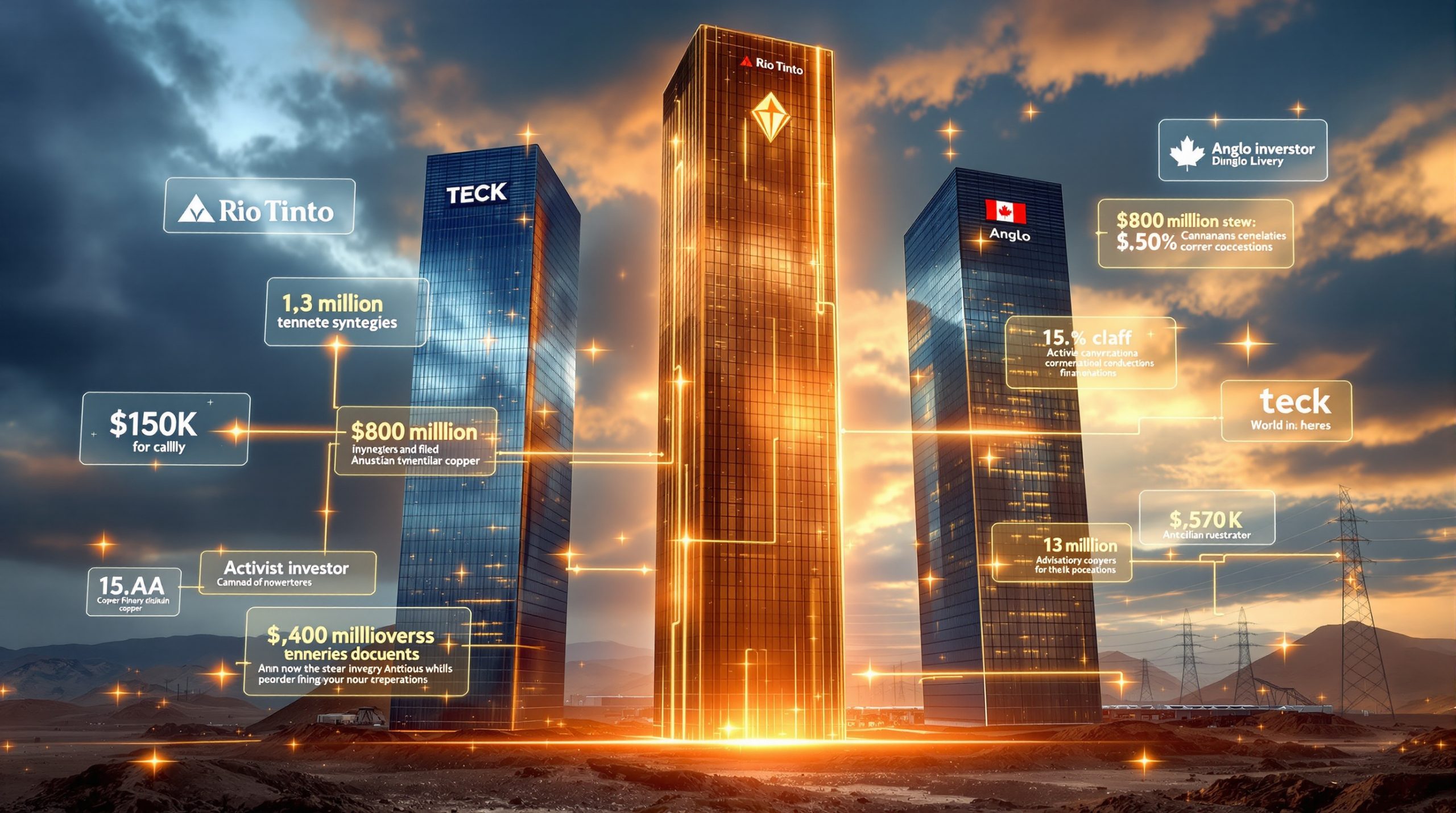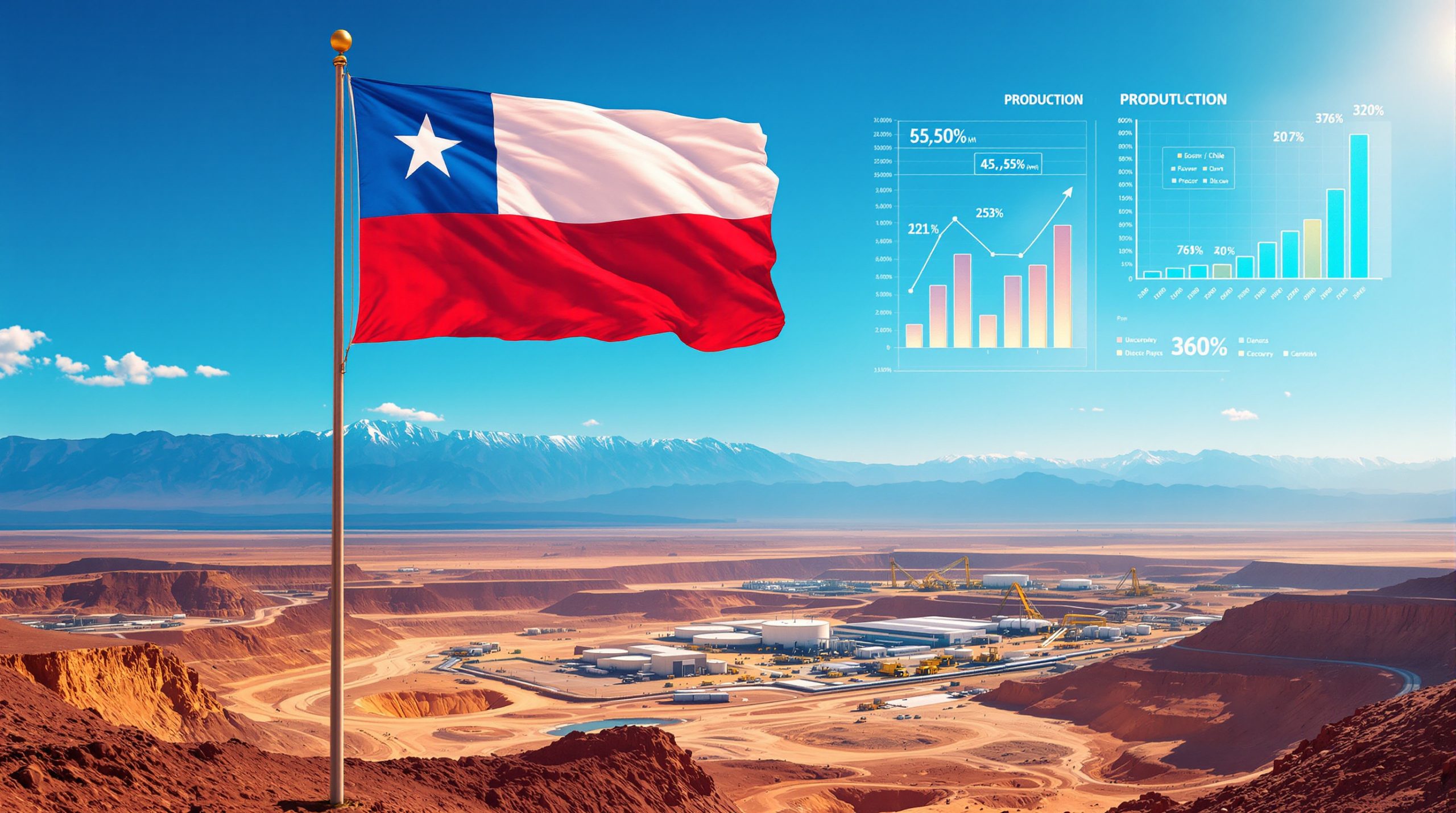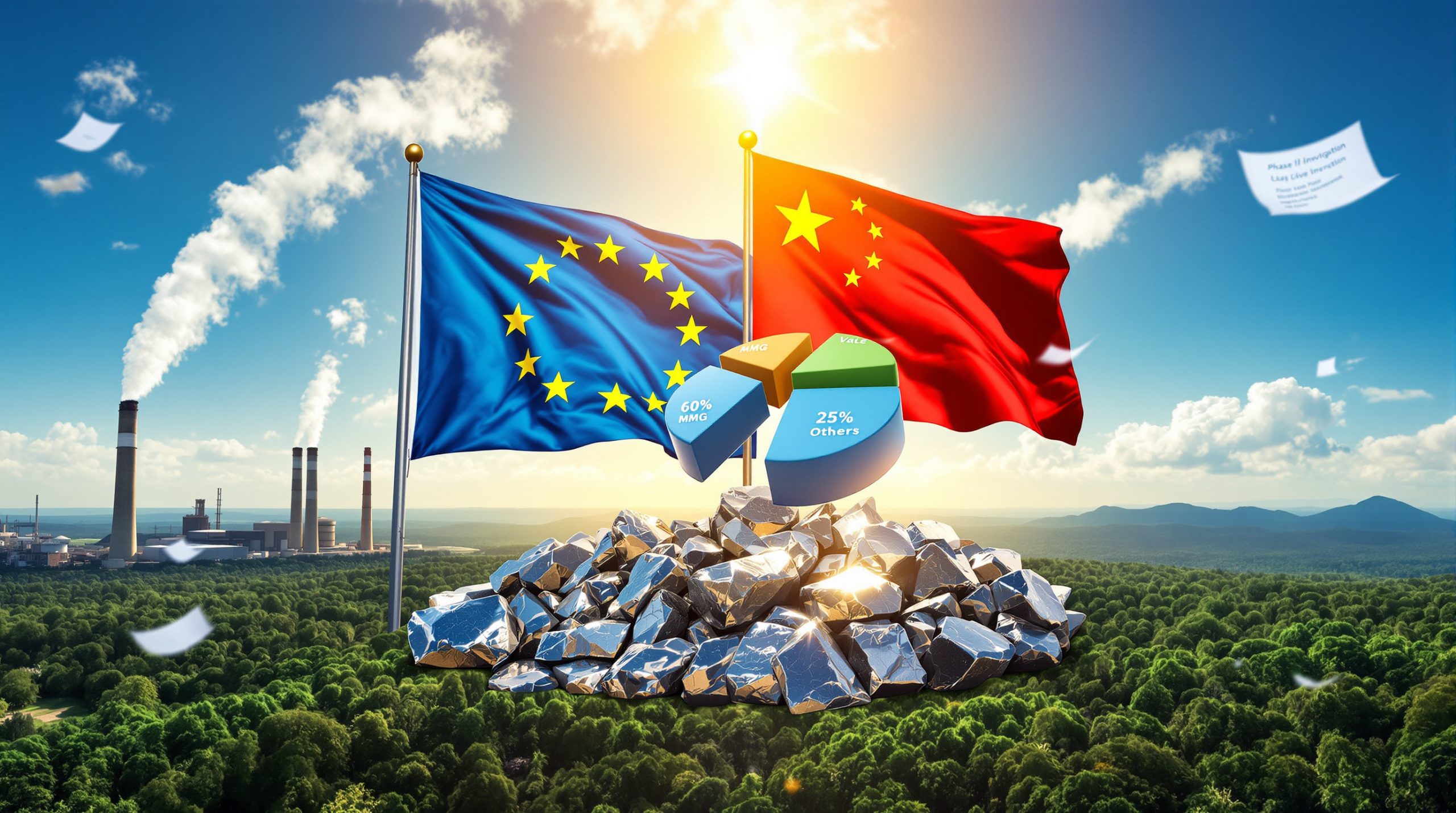China's Strategic Integration of Rare Earths in Environmental Transformation
China's environmental transformation strategy fundamentally depends on critical minerals transition that power clean technology infrastructure. Furthermore, rare earths in china's green strategy represents a sophisticated coordination between resource extraction and renewable energy deployment. These specialized elements enable the functionality of renewable energy systems, electric transportation networks, and advanced manufacturing processes essential for carbon neutrality objectives by 2060.
Modern electric vehicles require approximately 0.5-1 kg of neodymium and 50-100 grams of dysprosium per motor for high-performance applications, according to the International Energy Agency. In addition, wind turbine permanent magnet generators demand even more substantial quantities, requiring 150-600 kg of rare earth elements per megawatt of installed capacity, primarily neodymium and praseodymium.
Key Applications in Green Technology:
- Electric vehicle motor magnets requiring neodymium and dysprosium compounds
- Wind turbine generators utilising permanent magnet materials for direct-drive systems
- Solar panel manufacturing incorporating specialised rare earth compounds
- Energy storage systems demanding unique mineral components for efficiency optimisation
Rare earth elements function as the industrial vitamins that make modern green technology possible, with no viable substitutes for most applications currently deployed at commercial scale.
China's Dual Carbon Framework and Resource Coordination
The integration of rare earth production with China's dual carbon framework represents sophisticated environmental policy coordination. Consequently, this strategy combines resource extraction optimisation with renewable energy deployment across mining and processing operations, targeting emissions peak by 2030 and carbon neutrality by 2060 through the National Development and Reform Commission's strategic planning process.
Recent industry developments demonstrate this integration approach. At the 2025 Zero-Carbon China Green Industry Investment Conference in Sichuan Province, rare earth producers showcased environmental compliance achievements alongside production capabilities. This illustrates how regulatory compliance becomes competitive advantage rather than operational burden, directly supporting rare earths in china's green strategy.
China's Dominance Across Global Supply Chain Infrastructure
China maintains unprecedented control over critical mineral processing capabilities, managing approximately 85-90% of global rare earth refining operations and nearly 95-99% of heavy rare earth processing capacity. However, this dominance extends beyond mining into sophisticated downstream manufacturing integration.
Supply Chain Control Analysis:
| Processing Stage | China's Market Share | Global Dependency Level |
|---|---|---|
| Mining Operations | ~60% | Moderate |
| Initial Processing | ~85% | High |
| Advanced Refining | ~90% | Critical |
| Heavy REE Processing | ~99% | Complete |
China processed approximately 640,000 metric tons of rare earth oxide equivalent in 2023, representing dominant global market positioning according to U.S. Geological Survey data. For instance, this concentration creates structural dependencies for international clean energy deployment across Western economies.
Vertical Integration Manufacturing Strategy
Chinese companies leverage comprehensive integration strategies connecting rare earth extraction directly to end-product manufacturing. This approach eliminates supply chain vulnerabilities while maximising value capture across the entire production spectrum, from mining operations through advanced processing and downstream manufacturing capabilities.
The operational model exemplified by companies featured in recent industry showcases demonstrates systematic competitive advantages. Furthermore, advanced production processes combined with abundant hydropower resources and governmental policy support create unique positioning as China accelerates low-carbon industrialisation initiatives.
Rare Earth Processing Technology Stages:
-
Mining & Concentration: Physical extraction followed by flotation and magnetic separation achieving 60-70% REO content
-
Roasting & Leaching: Chemical processing converting oxides to soluble compounds through hydrometallurgical operations
-
Solvent Extraction: Advanced separation technology isolating individual rare earth elements with specialised heavy rare earth capabilities
-
Purification & Refinement: Converting separated elements to metal or oxide form meeting 99-99.99% purity specifications
Export Controls as Strategic Environmental Policy Tools
Recent regulatory developments demonstrate how China weaponises rare earth access to support broader geopolitical objectives while advancing domestic green industrialisation. Moreover, export licensing requirements and technology transfer restrictions create strategic leverage over international competitors seeking clean energy deployment.
China implemented enhanced export controls beginning in September 2023 with gallium and germanium licensing requirements, followed by expanded rare earth compound restrictions. These measures resulted in 20-30% reduction in international supply availability within six months, according to Chinese controls on rare earths data from the Ministry of Commerce.
Export Control Impact Mechanisms:
- Enhanced export licensing for critical rare earth compounds with 30-90 day processing timelines
- Technology transfer restrictions on processing equipment exceeding specified technical specifications
- Strategic stockpiling initiatives maintaining 300,000-500,000 metric tons of state reserves
- Preferential pricing structures creating 40-60% premiums for international buyers compared to domestic manufacturers
Geopolitical Leverage Through Resource Access
Export control mechanisms force international companies to either relocate operations to China or accept supply chain vulnerabilities that could disrupt green technology deployment in Western markets. Recent price analysis shows neodymium export pricing averaged $5.50/kg compared to $3.80/kg domestic pricing in Q2 2024, demonstrating systematic leverage application.
The mandatory export licensing system requires disclosure of end-use destinations and final applications. Consequently, this enables strategic supply allocation based on geopolitical considerations rather than purely market-based mechanisms.
Environmental Production Challenges and Compliance Innovation
Traditional rare earth mining and processing operations generate substantial environmental impacts, including soil contamination, water pollution, and radioactive waste management challenges. However, China's evolving environmental regulations increasingly constrain production capacity while demanding cleaner extraction methodologies, aligning with broader mining sustainability trends.
Environmental Impact Quantification:
- Water contamination generating 2,000 cubic meters of contaminated wastewater per metric ton of rare earth oxide produced
- Heavy metal concentrations in mining discharge exceeding environmental standards by 10-100x before treatment
- Thorium content in rare earth ores averaging 3-12% by weight, requiring permanent geological disposal
- Regional PM2.5 concentrations in mining areas exceeding WHO guidelines by 300-500%
Environmental Concerns: Heavy metal contamination in mining regions, radioactive waste from thorium-containing ores, water resource depletion and contamination, and air quality degradation from processing facilities represent ongoing challenges requiring technological solutions.
Advanced Environmental Management Technologies
Companies achieving environmental compliance integrate advanced processing technologies with renewable energy systems. Furthermore, recent industry showcases demonstrate how A-rated environmental performance ratings become competitive advantages in China's evolving regulatory landscape, with facilities achieving Sichuan Provincial Green Factory designation and applying for National Green Factory status.
Advanced leaching processes reduce tailings generation by 30-40% compared to conventional methods, while closed-loop solvent extraction systems enable chemical recovery and recycling. Additionally, multi-stage wastewater treatment systems remove 95%+ of heavy metals before discharge, incorporating modern mining ESG principles with treatment costs ranging $2,000-$10,000 per metric ton processed.
Hydropower Integration Supporting Strategic Positioning
Strategic location of rare earth processing facilities near abundant hydropower resources enables carbon-neutral production capabilities while reducing operational costs. In addition, this geographic advantage reinforces China's competitive position in global markets through environmental compliance integration.
Hydropower Integration Advantages:
- Reduced carbon intensity of energy-intensive processing operations enabling environmental compliance
- Lower electricity costs for refining operations improving economic competitiveness
- Enhanced environmental performance capabilities supporting regulatory compliance
- Strategic alignment with renewable energy objectives advancing dual carbon goals
Sichuan Province's abundant hydropower resources provide particular advantages for rare earth processing facilities, enabling environmental stewardship positioning while maintaining competitive production costs. Consequently, this combination of renewable energy access and advanced production capabilities creates systematic competitive advantages over international competitors dependent on fossil fuel-based energy systems.
Global Green Technology Development Dependencies
China's integrated approach to rare earth production and green technology manufacturing creates structural dependencies for international clean energy deployment. However, Western economies face strategic choices between supply chain security objectives and decarbonisation timeline requirements, reflecting broader patterns in mining industry evolution.
International efforts to develop alternative supply chains face substantial timeline challenges. For instance, new mine development requires 10-15 years for permitting and financing, processing capability development takes 5-8 years for technology transfer, and integrated supply chain establishment requires 15-20 years to achieve scale economics competitive with Chinese operations.
Western Response Strategy Development:
| Development Stage | Estimated Timeline | Primary Obstacles |
|---|---|---|
| New Mine Development | 10-15 years | Environmental permitting, project financing |
| Processing Capability | 5-8 years | Technology transfer, skilled workforce |
| Integrated Supply Chain | 15-20 years | Scale economics, market development |
Investment Implications and Market Psychology
Investors in green technology sectors must account for supply chain concentration risks and potential geopolitical disruptions when evaluating project feasibility and long-term returns. Furthermore, China's strategic control over rare earth supply chains influences global pricing structures for clean technology deployment, affecting the economic viability of renewable energy projects and electric vehicle adoption rates worldwide.
Strategic stockpiling initiatives and preferential domestic pricing create systematic market distortions favouring Chinese manufacturers. However, international rare earth project development faces financing challenges due to uncertain demand allocation and potential supply chain disruption from established Chinese producers.
China's 15th Five-Year Plan and Market Evolution
The upcoming planning period (2026-2030) emphasises strategic endurance policies designed to maintain long-term competitive advantages in critical mineral sectors. This approach balances domestic supply security with international market influence through coordinated policy implementation, representing another evolution in rare earths in china's green strategy.
Strategic Planning Framework Elements:
- Enhanced domestic processing capacity development supporting supply chain security
- Technology advancement in extraction methods improving environmental performance
- Environmental compliance standardisation creating competitive barriers
- Export policy optimisation for sustained geopolitical leverage
The integration of rare earth production with dual carbon goals through the Five-Year Planning process demonstrates systematic coordination between resource extraction, environmental objectives, and strategic competition. Consequently, this approach enables environmental compliance positioning while maintaining strategic leverage over international competitors dependent on Chinese supply chains.
Recent industry conferences showcase this integrated approach, with high-level delegation inspections of rare earth facilities demonstrating governmental prioritisation of environmental compliance alongside production capabilities. Moreover, companies achieving A-rated environmental performance and Green Factory designations receive preferential policy support and market access advantages.
Future Green Technology Cost Implications
China's strategic control over rare earth supply chains influences global pricing structures for clean technology deployment worldwide. This control mechanism affects the economic viability of renewable energy projects and electric vehicle adoption rates across international markets through systematic pricing advantages for domestic Chinese manufacturers.
Export quota systems and licensing requirements enable supply allocation based on strategic considerations rather than market mechanisms. For instance, the 2024 first-half export quota of 38,100 metric tons represented a 22.9% increase from 2023 levels, demonstrating supply management flexibility supporting domestic prioritisation objectives.
What Are the Market Dynamics and Pricing Mechanisms?
Rare earth price volatility affects clean technology deployment economics significantly. Historical analysis shows neodymium prices peaked at $42/kg during the 2010-2015 supply crisis before stabilising around $4-6/kg by 2023-2024, illustrating supply normalisation impact on technology deployment costs.
Current market dynamics show systematic pricing premiums for international buyers compared to domestic Chinese manufacturers, creating competitive disadvantages for Western clean technology deployment. Furthermore, this pricing differential affects renewable energy project economics and electric vehicle manufacturing costs outside China's integrated supply chain system.
However, the environmental implications extend beyond pricing to include mine reclamation innovation and strategic interdependence between nations seeking clean energy transitions.
Disclaimer: This analysis contains forward-looking statements and market projections based on current information. Rare earth market dynamics, geopolitical developments, and technology advancement timelines involve substantial uncertainties. Readers should conduct independent research and consult qualified advisors before making investment or strategic decisions related to rare earth markets or green technology deployment.
The strategic integration of environmental objectives with rare earth market control demonstrates China's sophisticated approach to combining climate leadership positioning with economic competitive advantages. In conclusion, this dual-use strategy enables environmental compliance narratives while maintaining strategic leverage over global clean energy deployment timelines and costs, fundamentally shaping rare earths in china's green strategy for the coming decade.
Want to Capitalise on Critical Minerals Investment Opportunities?
Discovery Alert's proprietary Discovery IQ model delivers real-time alerts on significant critical minerals discoveries across the ASX, instantly empowering subscribers to identify actionable opportunities in the expanding green technology supply chain sector. Begin your 30-day free trial today and understand why major mineral discoveries can lead to significant market returns by exploring Discovery Alert's dedicated discoveries page, showcasing historic examples of exceptional outcomes.




